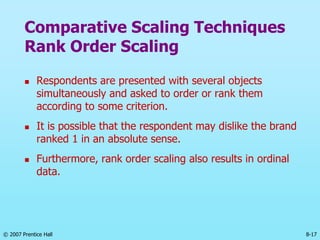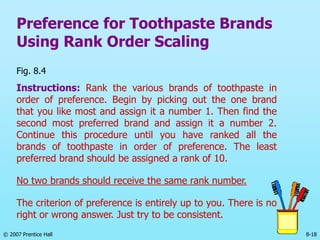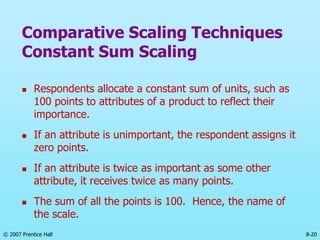This document discusses different methods of measurement and scaling used in marketing research. It begins with an overview of measurement and scaling, describing measurement as assigning numbers to characteristics according to rules. Scaling places measured objects on a continuum. There are four primary scales discussed: nominal, ordinal, interval, and ratio scales. The document then examines various comparative and noncomparative scaling techniques, such as paired comparisons, rank ordering, and constant sum scaling. It provides examples of how each technique is used to measure preferences. Finally, there is a comparison of scaling techniques and their resulting data types.




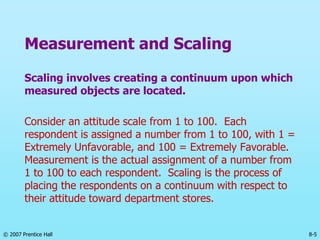


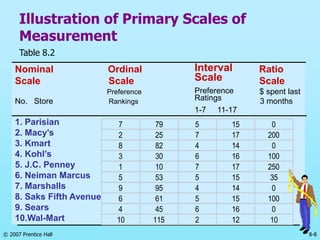



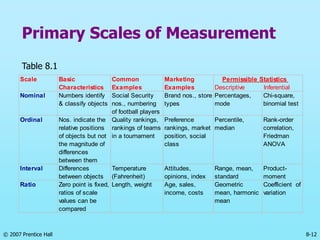
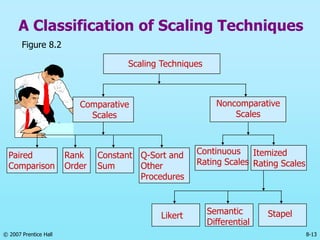

![© 2007 Prentice Hall 8-15
Comparative Scaling Techniques
Paired Comparison Scaling
A respondent is presented with two objects and
asked to select one according to some criterion.
The data obtained are ordinal in nature.
Paired comparison scaling is the most widely-used
comparative scaling technique.
With n brands, [n(n - 1) /2] paired comparisons are
required.](https://image.slidesharecdn.com/2-presentationsmalhotraorgnlppt08-140523023422-phpapp02/85/Chapter-8-Marketing-Research-Malhotra-15-320.jpg)

